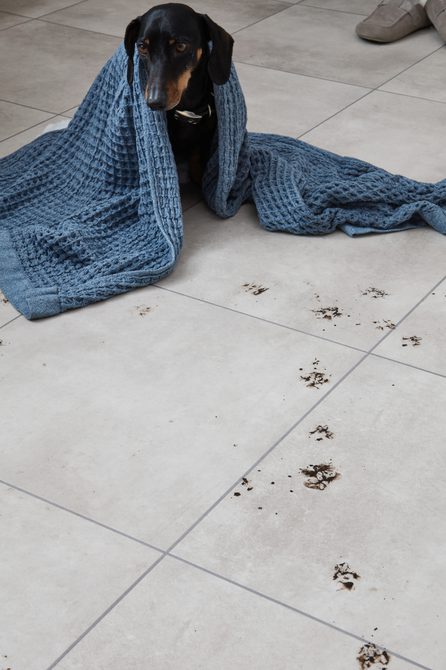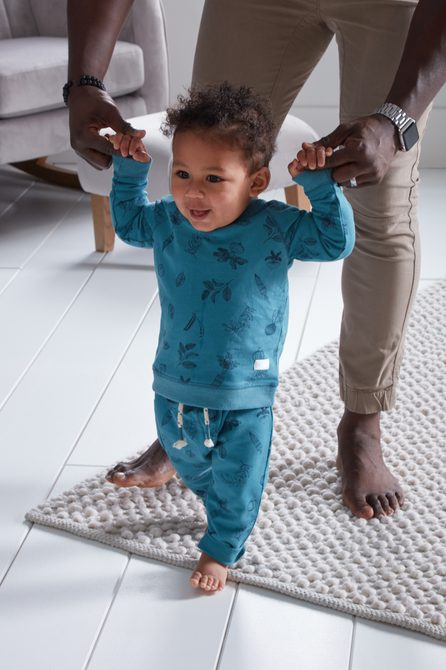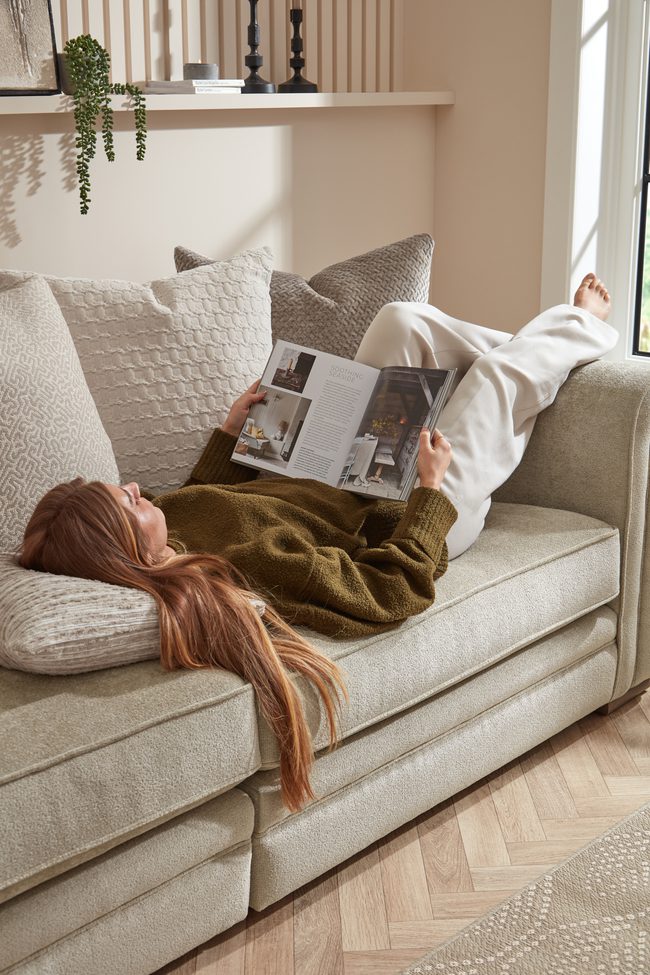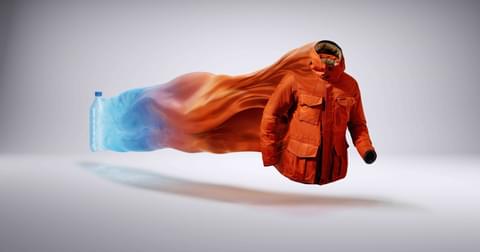Why Room Set Photography Helps Brands
Room set photography is one of the most effective ways for brands to connect with their customers on a human level. By using models to tell a story, brands can bring their products to life in a way that feels natural, relatable, and aspirational. Unlike ecommerce product photography, lifestyle photography demonstrates how products are used in everyday scenarios. This storytelling approach creates emotional connections, helping customers to imagine themselves using your brand. Models can bring that narrative to life, offering authenticity, diversity, and relatability. These factors strongly influence customers’ purchasing decisions. In this article, we’ll cover everything from concept creation to post production, helping you understand how to best use models in room set photography.

Concept Creation
Every strong lifestyle shoot begins with a clear concept. Often lifestyle shoots revolve around a story, told by the models and the styled setting. Family scenarios are popular, along with other aspirational concepts such as romance, friendship, and relaxation.
Outlining a theme or scenario helps everyone to be on the same page, including the models who can aim for a consistent look and feel throughout the shoot. Photographers, stylists, hair & make up, and post production will all understand the brief. You will need to decide whether your model is in the forefront of the images, taking a strong role in the images, or is in the background, subtly contributing to the lifestyle feel.

A concept also helps your audience buy into the imagery. This is particularly important in advertising, when brands only have a snapshot to communicate their story, brand and products. By relying on a familiar narrative, customers can fill in the gaps themselves without the advert needing to explain every detail.


Photography Or Video?
Deciding between photography and video depends on your brand’s key communication channels. Stills are excellent for ecommerce, and print campaigns, whilst short-form video provides more options with movement and stronger engagement on social media. Increasingly, brands choose to capture both formats simultaneously to maximize their asset library, and budgets.
Videos can come in various forms, and can create different brand perceptions. For example, stop motion animation is a useful option for a playful story, whilst a highly polished product video has a professional look.
The Set And Styling
The environment and props you choose are as important as your choice of models. This will depend on your product and your customers’ tastes. Natural, relatable locations like homes, cafés, or outdoor spaces create authenticity. An aspirational feel to the images is usually effective in marketing as it creates desire for products.
Props should feel like a natural extension of everyday life, avoiding anything that looks overly staged. The set should complement the product without overpowering it. We recommend including a stylist on your shoot as they will take a professional approach to the styling, researching trends and what matches your customers’ preferences. An unexpected benefit of a stylist is the time they save for you on set, allowing you to focus on working with the photographer.

Model Selection
Selecting the right model is one of the most important considerations for your shoot. Your choices should link back to the theme or scenario you are aiming to create. Think about the type of people your customers would find engaging – often this will be models that reflect your customers.
Age and gender are the most obvious characteristics that need to reflect your customers and tie into your scenario.
Another consideration should be the diversity in your models. Representation builds trust and inclusivity. It may not be possible for individual shoots to include a diverse array of models, however, your website or catalogue as a whole should show a diverse range of people.
You should also make sure your models can perform everything you need them to do. Models will have different skillsets, and it’s important to be sure the models you select can meet the requirements for your shoot. This may involve posing in certain ways or acting which places more demand on models.
Best practice is to aim for natural relatable models that fit into your narrative easily. Relatable models lead to lifestyle images that feel approachable rather than overly polished.

Styling, Hair & Makeup Considerations
Wardrobe, hair, and makeup should enhance the brand story, not overshadow it. For lifestyle shoots, a “less is more” approach often works best. This includes natural looks, muted tones, and outfits that make sense for the setting.
Professional hair and makeup for room set shoots should aim to have the models looking camera-ready whilst still authentic and approachable. Many models can look after their hair and makeup themselves if the look is natural, however, hiring a professional provides extra reassurance and can help speed up any changes during the day.

Direction On Set
Natural interaction is key to lifestyle imagery. Photographers should give prompts for natural movement rather than overly staged poses, encouraging models to smile, laugh, and interact authentically with props and products. This candid direction creates a sense of realism and ensures the content avoids looking forced or artificial.
Much of this relies on the atmosphere in the studio. Music can be a big help to create the specific mood, and it's also important that everyone on set contributes positively to the atmosphere. This will often carry through to the images and is an overlooked aspect of great photography.
If you are considering a family scene for your room set product shoot, then interacting with children will be crucial on the day. Many model agencies provide a chaperone with child models, or a parent may be in attendance. Regardless of this, we make sure to provide children with the best environment and direction during shoots. The introduction of animals posing as pets adds another layer of complexity, however, animals can create some fantastic final images. The difficulty can be worth it in the end!

Product Focus vs Lifestyle Focus
The end use of your images and videos is important to keep in mind at all times. Striking the right balance between hero product shots and lifestyle storytelling is essential, and will be influenced by your marketing strategy.
Product-led images and videos ensure clarity. This should be the focus if you have limited time as you need to ensure your customers can understand all the selling points of your product.
We advise that a mix of lifestyle and ecommerce content across your marketing activities. Room set images should tell customers about your brand and what your product can offer to their lives, whilst product led images need to demonstrate product features more directly.
Lifestyle-focused visuals should build brand identity. Most campaigns benefit from a mix of both, ensuring versatility across platforms such as social media, websites, and digital advertising.
Post Production Considerations
Editing for room set photography should enhance the product but not over-polish the images. The focus should be to maintain the authenticity of good photography, whilst sharpening up any obvious imperfections that distract attention.
Again, link back to your narrative and themes to instruct post production teams. Review your images in line with the theme, and suggest any adjustments that push you further towards your ideal.
Retouching should keep skin tones natural and surroundings realistic. It may be apt to enhance the lighting for a particular time of day, or feel to the image, however be aware that over-editing risks the images appearing artificial.
Where To Use Your Room Set Images & Videos
Room set content focusses on brand building by tying your product to scenarios and settings. Therefore, it's a great tool to use in the earlier stages of the customer journey. Use room set images and videos to build awareness, draw customers in, and position your products in the marketplace.
Here are some examples of where room set images work effectively:
- Catalogues & lookbooks
- Social media campaigns (video works well here)
- Print advertising & PR
- Website banners, category pages
- Digital advertising & email marketing
By producing a strong library of product visuals, brands can maintain consistency across multiple channels.

Our Room Set Photography Services
Our studios handle all elements of lifestyle photography, including set building, model booking, photography, video, and post production.








